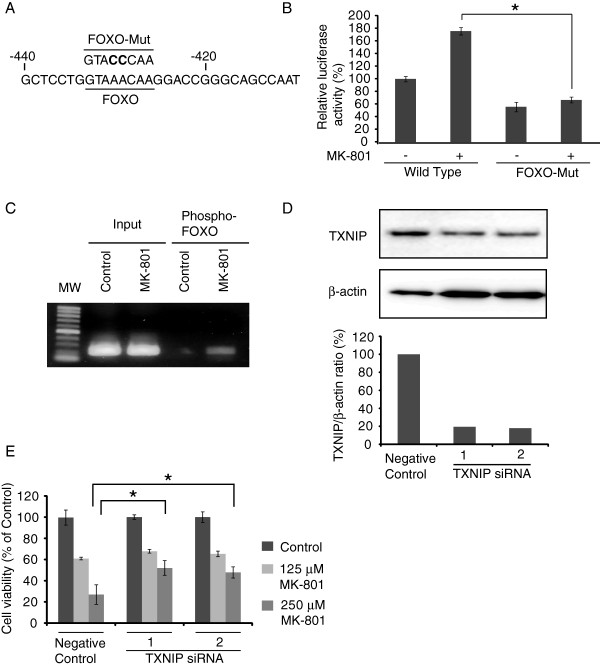Figure 4.
Regulation of TXNIP expression by FOXO and role of TXNIP in growth inhibition. A: The promoter region of human TXNIP containing the FOXO binding site (between -478 and -260 nucleotides from the start of the protein coding region) is shown. FOXO-Mut: The consensus sequence of FOXO binding site was destroyed by two nucleotide mutations. B: Reporter gene plasmid containing the wild-type or FOXO-Mut promoter fragment and pGL4.74 control plasmid was co-transfected into HepG2 cells. After 24 h of MK-801 (250 μM) treatment, luciferase activity was measured. Each bar represents mean ± SD of three replicates. *P < 0.05. C: HepG2 cells were treated with or without MK-801 (250 μM). ChIP reaction was performed on 5ug of prepared chromatin using anti-phospho-FOXO antibody. PCR was carried out with input or immunoprecipitaed DNA using specific primers flanking the FOXO binding site in the TXNIP promoter region. D: The gene knock-down efficiency of two TXNIP siRNAs as well as negative control on HepG2 cells was examined by Western blot. TXNIP/β-actin ratio was calculated from the density of each band. E: HepG2 cells were cultured on a 96-well plate and 5 nM of TXNIP or negative control siRNA was transfected. After 48 h of MK-801 (125 or 250 μM) treatment, cell viability was examined by the MTT assay. Data were statistically analyzed by one-way analysis of variance and Bonferroni post-test. *P < 0.05.

